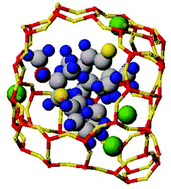Value of zeolites in asymmetric induction during photocyclization of pyridones, cyclohexadienones and naphthalenones†
Abstract
Two strategies, namely chiral inductor and chiral auxiliary approaches, have been examined within zeolites with the aim of achieving asymmetric induction during the photocyclization of cyclohexadienone, naphthalenone and pyridone derivatives. Within zeolites, enantioselectivity as high as 55% and diastereoselectivity as high as 88% have been obtained. The observed stereoselectivities are significant given the fact that these reactions gave very little stereoselectivities in isotropic solution media. The results obtained on the photocyclization of dienones, naphthalenones and N-alkyl pyridones within zeolites compliment our earlier investigations on the photocyclization of tropolone derivatives, the geometric isomerization of 1,2-diphenylcyclopropanes and 2,3-diphenyl-1-benzoyl cyclopropanes, and the Norrish type II reaction of α-oxoamides, phenyl adamantyl ketones, phenyl norbornyl ketones and phenyl cyclohexyl ketones. With the help of these examples, we have established the importance of zeolite and its charge compensating cations in effecting asymmetric induction in photochemical reactions.


 Please wait while we load your content...
Please wait while we load your content...